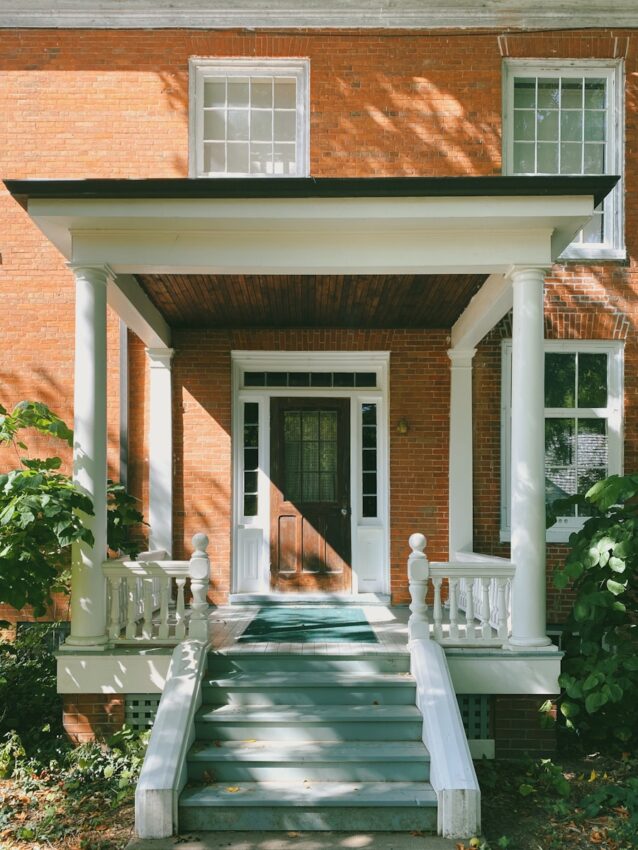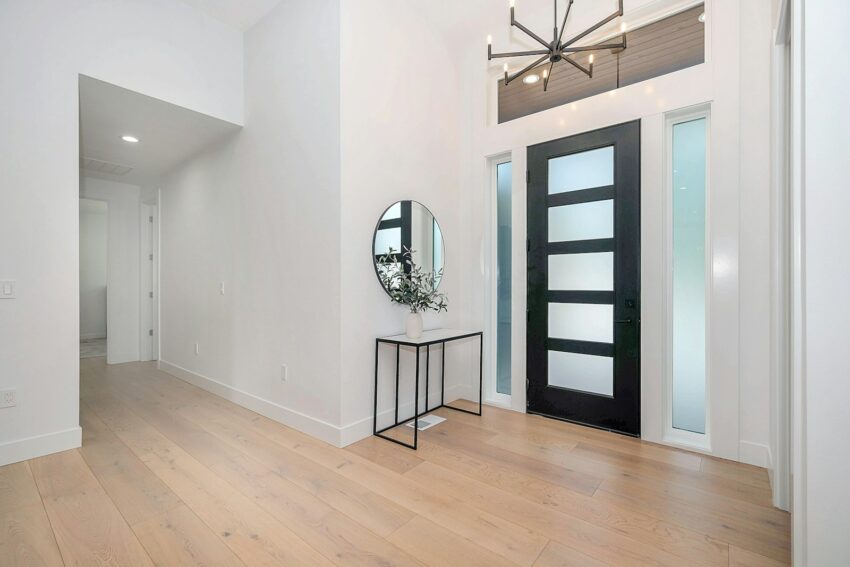For the installation of an entrance door, you should consider options that are designed specifically for the street-home boundary. The main problems that private home owners may encounter are condensation, freezing, corrosion, peeling or burning of the coating.
To avoid undesirable consequences, it is important to choose a quality door. We will tell you what to pay attention to when buying an entrance door and how to choose a door that will provide protection from burglary and keep the house warm.

What are the best entrance doors to a private house?
In terms of reliability, the best choice is metal doors. They are weatherproof, able to protect both from the bitter cold and from uninvited guests. If you are looking for a high-quality and energy efficient front door, look for Canadian ones like exterior doors in Winnipeg. They will have all the right features due to the country’s climate.
Doors made of other materials lose out on many indicators. Plastic models are afraid of direct sunlight; wooden products are high humidity. Both are easy to open. On the contrary, metal doors equipped with an anti-burglary system will turn your home into an impregnable fortress. However, such doors also have a weak point: thermal insulation.
To prevent the metal door from freezing in winter and not trapping cold air, it must be insulated.
There are two ways to do this:
- Equip a vestibule. The problem of freezing front doors can be solved by installing a vestibule. However, this solution is not always reasonable, and it is not so easy to implement, especially if the construction of the house is already completed;
- Choose a door with a thermal break. Such a door removes the need for a vestibule. Thermal break—a layer of material with low thermal conductivity, which serves as a barrier to cold air.
The best solution for an entrance door for a country house is a thermal break design. A door with a thermal break performs the same function as an air cushion in the vestibule: it smoothes out the temperature difference between inside and outside the house.

What to consider when choosing an insulated door?
Protective and thermal insulation properties of the door depend on its design features, and the design of the door affects other operational characteristics: durability, convenience, and fire safety.
Lock system
Choosing a door lock for a private home is an important aspect of ensuring safety and comfort for its residents. The market offers a variety of types of door lock system, each with its own features, advantages, and areas of application:
- Mechanical locks attract with their reliability and durability, requiring no power connection.
- Cylinder models provide easy replacement of the core without the need to change the whole lock.
- Suvald locks are famous for their high level of protection against burglary due to the complexity of the mechanism.
- Electronic locks, in turn, offer the convenience of controlling access via cards, codes or even a smartphone, extending the functionality and increasing the level of security.
It is important to consider the type of door, the degree of protection required and personal preferences when choosing a lock for a private home to ensure the best combination of convenience and security.
Steel thickness
The door leaf is made of steel sheets of various thicknesses. On the one hand, the use of thin sheet metal makes the construction cheaper, but on the other hand, it makes it less reliable. A steel door with a thickness of less than 1.2 mm is unlikely to protect against intruders; it can be broken into without the use of sophisticated tools.
To fully protect your home from uninvited guests, choose sheet metal no thinner than 1.5 mm. Too thick sheet steel is not worth choosing—it will only make the door heavier. A heavy door leaf is uncomfortable to use and also dangerous to injure.
The leaf design and door frame construction affect the entrance door’s reliability. It is optimal if the frame is made of a 3-5 mm thick steel profile.
Stiffening ribs
The stiffening ribs increase the resistance of the door leaf to different types of loads. They make the following distinction:
- horizontal stiffeners
- vertical stiffeners
The first resists squeezing, and the second prevents the top or bottom edge of the web from bending. A combined vertical-horizontal stiffener system is ideal, as it combines the advantages of both types.
Insulation material
The properties of the insulating material provide the thermal break effect. The more thermal insulation layers the pie contains, the better it equalizes the temperature difference.
Mineral wool, foil-insulated Isolon, and polystyrene foam are used as thermal insulation. If you are concerned about noise from the street, choose a door insulated with mineral wool. This is an environmentally friendly material that perfectly insulates noise. A variation of mineral wool is glass wool. This option is best avoided, as in hot weather the material heats up and emits toxic substances.
Conclusion
So, the main parameters of choosing an entrance door for the house are:
- reliability and durability;
- good sound and heat insulation;
- wear-resistant exterior finish;
- aesthetic design;
- reliable locking system.
Among all types of entrance doors for private homes, metal doors with thermal breaks are recognized as optimal in terms of warmth and reliability. Modern models have different variants of external design, equipped with anti-burglary protection systems. The cost of an insulated door depends on the thickness of steel, the number of thermal insulation layers, and the type of filler and finish.
